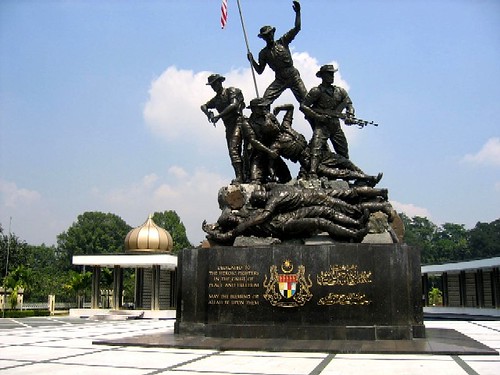
Tunku Abdul Rehman successfully carried forward the Malay freedom movement after Dato Onn bin Jaafar left UMNO. He successfully unfurled the Union Jack from the land of Malaya on August 31, 1957. It was the day when Malaya got its freedom which was lost back in 1511 AD. It was obtained after great struggle and long patience. Malaysians and their friends and well wishers ought to cherish and celebrate this day. But it is actually Melaka, where it all began. When I paid my bill after shopping last week (mid August 2006), the cashier, along with receipts, handed over to me a small flag of Malaysia free of cost. I kept wondering what to do with the flag? I do stay in Malaysia but I'm not Malaysian citizen; so what I have to do with the Merdika celebrations? The evolution of my thoughts first led me to believe that since I live in Malaysia and many Malay are my friends and colleagues, so it’s better to share their joy and happiness. I, therefore, decided to hoist that small flag on my house.

Tunku Abdul Rahman: Ride to Bandar Hilir Padang, Malacca to announce Merdeka after return from London
Though I hoisted the flag, my thoughts continued to transform in subconscious in search of possible better reason, if there is any, for celebrating Malaysian Merdika, than just sharing joys and happiness of Malay friends and colleagues. This led my thoughts to travel back in the history to year 1843 when General Charles Napier of British East India Company had invaded and taken away my motherland, Sindh. None else but the same colonialists had occupied Malaya peninsula as well. So the end of colonial rule over Malaysia provides me enough a reason to cherish over the Malaysian Merdika. Although I had now found a better rationale but my thoughts didn't stop there. They took me back to 1957 to the day when Union Jack was being lowered at Merdika Padang (stadium) and Tunku Abdul Rehman was declaring Independence of Malaya Federation. It was none else but my family elder, Mir Ghulam Ali Talpur, who came all the way from Karachi to participate in the Merdika celebrations as official representative of Pakistan. So we are with Malaysians, sharing their joys and happiness from the day one of their independence. The 'Proclamation of Independence Museum' is housed in nice British period building built in 1912 and used previously as 'Melaka Club'. It is common saying that 'History of Melaka is the history of Malaysia' and that is not incorrect. Knowing the olden times of Melaka is the best way to know the history of Malaysia.So far I don't know what was here before 1396 AD. All I know at the moment is that in 1396 AD, Parameswara, the Sumatran prince, founded this state and named it after the name of 'Melaka' tree, under which he had once witnessed the fight between dogs and mouse deer. It was that fight in which he had noticed that mouse-deer can kick dogs. From that fight he got inspiration and courage enough to make up his mind to establish a State of his own. Thus when he established his State, he named it after the said Melaka tree under which he had witnessed the dog and mouse-deer fight. Sea farers from different land masses over the globe, including Arabia, India, South America, China, Iberia, and other parts of Europe had turned Melaka into great trading empire at the turn of 15th century.Islam spread in Melaka mostly from India. The traders from India first spread Hinduism in this region roughly coinciding with the beginning of the Christian era. Later, the Muslim traders from India spread Islam in this part of the World. By virtue of their financial standing, Gujarati and Bengali merchants drew large number of converts. Social contacts and marriages also played role in spreading Islam in Melaka. Parameswara is said to have converted to Islam when he married to Princess of Pasai (Indonesia). He adopted title of 'Shah' after inspiration from Iranian chiefs. He renamed himself as Sultan Iskandar Shah.
The second ruler of Melaka was Sultan Megat Iskandar Shah. He was confirmed as the ruler of Melaka by the Chinese Emperor. The third ruler of Melaka was Raja Tengah or Radin Tengah who took title of Seri Maharaja. After embracing Islam due to his marriage with Tamil Muslim lady, he took name of Muhammad Shah. The fourth ruler was the son of Princes of Rokan, Raja Ibrahim. According to historians, he adopted title of Seri Permeswara Dewa Shah. He was however stabbed to death after 17 months of rule.
The fifth ruler was elder half brother, by Tamil Muslim mother, called Raja Kasim. When he assumed throne, he adopted title of Sultan Mudzafar (Muzzafar) Shah. From here started what is said to be the Golden Period of Melaka Sultanate. Melaka faced danger from West as well as North, from Majapahit / Acehnese and Siamese forces. During Sultan Muzzafar Shah's period, attacks from Siam in the north were common. Siamese King Boromaraja II sent many armed expeditions to Melaka during second quarter of fifteenth century. Siamese forces is said to have marched again in the middle of 15th century during the times of Sultan Mansur, who had succeeded Sultan Muzzafar Shah. King Rama Tibodi II of Siam ordered Raja pf Ligor to attack Pahang which they had previously lost to Melaka. The Siamese forces were however, defeated. The colonial period began with the capture of Melaka by Portuguese in 1511 AD. The Portuguese armada is said to have consisted of only nineteen ships and one thousand four hundred soldiers led by Alfonso de Albuquerque. The Sultan Mahmud and Sultan Ahmad were forced to retreat to nearby places named Batu Hampar and Bentan. Although the Portuguese attack under Duarte de Millo was repulsed, the attack on Bentan forced the Sultan Mahmud to head off to Kampur in Sumatra, where he died in 1528 AD. The descendents of the Sultan of Melaka later founded government on Johor and attempted to regain Melaka, but the walls of A` Famosa proved impregnable.

Forces of Sultan Ahmad and Mahmud defeated Portuguese soldiers when they first arrived at shores of Malacca on July 25, 1511 AD
The Portuguese rule was ended by Dutch in 1641 AD. The British took over the rule of Melaka from Dutch in 1824 AD. It was exactly the time when the British East India Company was trying to trap Talpurs of Sindh through one pact after another. Exactly nineteen years after the establishment of British authority over Melaka, Sindh was also captured by them, ending the rule of Talpur Mirs in Sindh.
British intrusion in the local affairs and exploitation of their national wealth and resources by British in Sindh and India resulted in armed freedom struggle in 1857. The people of Melaka also for same reason initiated their struggle for freedom. The people of Naning fought with British invaders in 1831 - 32. Though they did not succeed, their armed struggle does exemplify similarities between their struggle for the freedom and the struggle of the people of Indian Subcontinent for their freedom from their colonial invaders.
The evidence of opposition and resistance from Negri Sembilan and Perak can be found in the books of the history. The killing of the British resident J.W.W. Birch at Pasir Salak on November 02, 1875 provides firm evidence of similarities between the freedom struggle of Malays and the freedom struggle of Sindhis against their common colonial ruler. This was the time when the Hur freedom movement was strengthening its root in Sindh. Except Selangor, who opposed colonial power only covertly, the opposition from Pahang and other areas like Kelantan, Terengganu, and Sabah and Sarawak was quite open. Although there are many similarities between the freedom struggles of Sindh, India and Malaya, there are some dissimilarities as well. The students of history know that when the Indian National Congress initiated freedom struggle on political front, it comprised both Hindus and Muslims of India. Only later, after World War II, the 'Divide and Rule' policy of the British colonials was successful in dividing India on religious lines. The Muslim League got, in a way, the status of the representative party of Muslims in Muslim majority areas of India, including Sindh, only after the elections of 1946 and that too with a very thin majority. In contrast to this, the Malaya freedom movement, as far as I know, started with Malay nationalism, which in turn began as Islamic reformism espoused by Kaun Muda group of Malay intellectuals who were influenced by the religious reformism in the Middle East which was being promoted by Jamaluddin al-Afghani (Iran), Muhammad Abduh (Egypt) and Abdul Wahab (Saudi Arabia). Islam was seen as complete way of life and not just religion of mere piety and devotion. Syekh Tahir Jalaluddin and other reformists, after return from Middle East spread their ideas and influenced Malay society. While reformist movement in Malaya was able to influence Malay society and founded the basis of Malay nationalism towards the beginning of 20th century, the religious movements, e.g. Khilafat Movement, which aimed at restoration of the Muslim Caliphate after the fall of Turkish Ottoman Empire, at the hands of the British, failed to generate any kind of nationalism among the Muslims of India. Later on, the All India Muslim League, in a way, did attain status of representative political party of Indian Muslims, it failed to generate sense of Muslim nationalism probably because Indian Muslims were not ethnically homogenous whereas Malay Muslims were linguistically and ethnically homogenous with same religion and culture over Malaya Peninsula.
The World War II and the Japanese invasion of Malay was the turning point in the history of this region. Although Japanese occupation was shot lived, it did prove that British colonialists are not invincible. The declaration of Malay Union on April 01, 1946 was enough a pretext for Malay population to rejuvenate their freedom struggle. Under the Malay Union administration, most of the powers of Malay rulers were cut and transferred to the Governor of Malaya Union. The powers of the local rulers were limited only to the extent of having some say over Islamic religious matters.
Although the rulers had given consent to Malaya Union, the people refused to accept this kind of administration, especially because the new constitution offered equal citizenship in both Malaya Union and Singapore, which was seen as threatening the position of Malays in Malaya. The increased resentment among Malay, almost all of which were Muslim, led to the formation of United Malay National Organization (UMNO), under the leadership of Dato` Onn Jaafar on May 11, 1946. Malay Muslims were able to recognize the importance of their demography and their leaders tried to do their best to safeguard their interests. The Malay Muslims perceived realization and maintenance of their 'Bumiputra' status as their freedom, which they could only achieve if the colonial rulers leave their land.Dato` Onn bin Jaafar (1895-1962) was a staunch Malay nationalist who emerged as 'savior of Malay race' and defender of Malay rulers. He opposed Malaya Union because in the Union, the citizenship rights were thrown open to all races of the people who were born in Malaya, irrespective of whether they were born before, during or after Malay Union. He believed that the appointment of the Government of Malay Union would cause extinction of Malay rulers. To oppose Malaya Union he called Malay National Congress. The UMNO was founded in its third meeting. The British government was forced to give up the idea of Malaya Union who agreed to change it to the Federation of Malaya on January 21, 1948. Later on August 23, 1951, he left UMNO when his suggestion that UMNO's membership be opened to non-Malays as well. He, in the later stage of his political life had realized to carry along the other races with him. He seems to had evolved from staunch Malay nationalist to a kind of nationalist who, in the later stage of his political career, wanted to carry with him the other races and religion (Buddhist Chinese and Indian Hindus) in UMNO. It is clear that the peace and progress in the multi-racial, multi-ethnic societies is directly proportional to the level of flexibility and respect offered by the constituent groups and individuals to one another within the parameters of decency and civility. In 1951 Municipal elections, UMNO formed alliance with Malaya Chinese Association (MCA). This UMNO-MCA Alliance was able to defeat Dato onn Jafaar’s Independence Malay Party (IMP). The victory of Alliance made Tunku Abdul Rehman realize the importance of taking other communities together. He thus offered Tun Tan Cheng Lock of MCA to extend the alliance to national level.
The Federation of Malay was found on February 01, 1948 consisting nine states viz. Selangor, Perak, Kedah, Perlis, Negri Sembilan, Johore, Pahang, Terengganu and Kealantan and two Strait Settlements of Melaka and Pinang. The Malaya Union set up in 1946 was finally annulled on January 21, 1948.
The administration of the Federation of Malaya was made up of British High Commission and assisted by Federal Executive Council. The Rulers Council was formed as an advisory council to the High Commissioner. The post of the British Resident in each state was abolished and replaced by Chief Minister.

Tunku Abdul Rahman who led Malaya to Merdeka

Dato Onn bin Jaafar
After Dato Onn bin Jaafar left the UMNO scene, Tunku Abdul Rehman (1903-1990) successfully carried forward the Malay freedom movement as next president of UMNO. He successfully unfurled the Union Jack from the land of Malaya on August 31, 1957. It was the day when Malaya got its freedom which was lost back in 1511 AD. It was obtained after great struggle and long patience. Malaysians and their friends and well wishers ought to cherish and celebrate this day.References and further readingsProclamation of Independence Museum, MelakaSejara MelayuChronology of historical events.
Note about the word Melaka: The present town of Melaka, named after ‘Pokok Melaka'or 'Malacca Tree’ was previously spelled "Malacca" during British times. Other spellings used in earlier times include "Malakka" or "Mulaqua" as called by North African Moorish traders. The Dutch had even named it as "Slavenburgh"!
This article was written and published for the first time by Dr Mir Atta Muhammad Talpur on 31 August 2006 for audience in Sindh (Pakistan).
If you find any discrepancy in the historical facts and figures, please notify the Editor. Thank you – Ed.

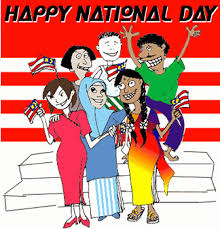
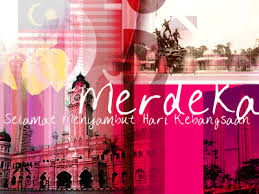
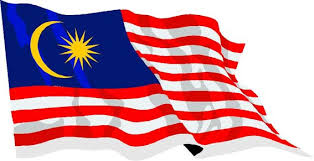
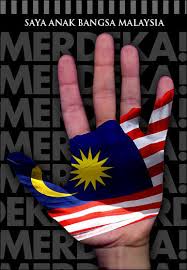
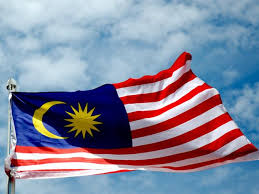


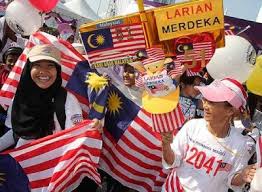
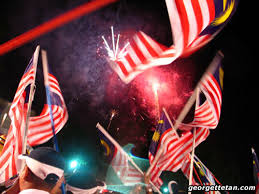
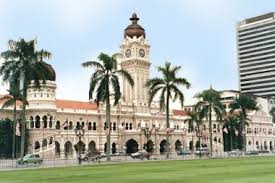
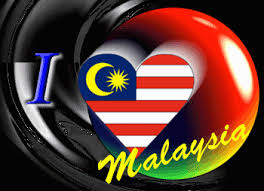






No comments:
Post a Comment